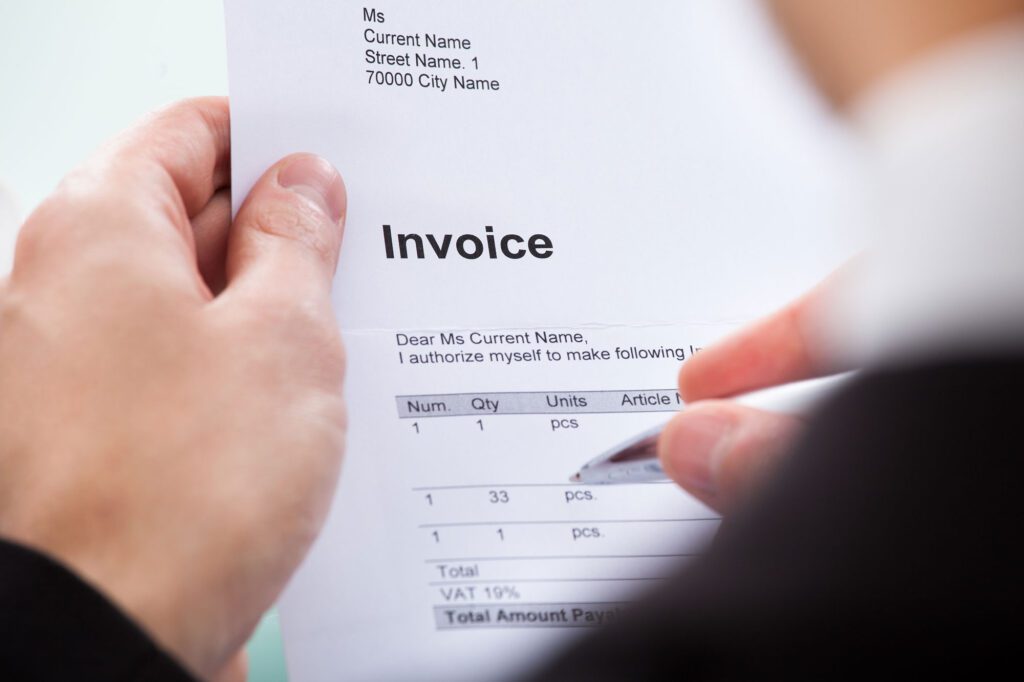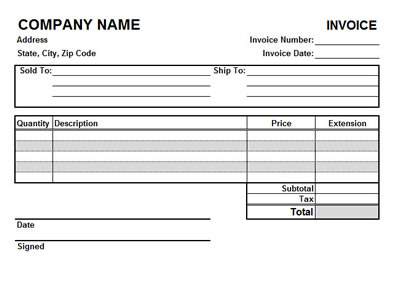
For these types of companies, billing in arrears is the most efficient for them and their customers. You consume water or data respectively and then the companies bill you after you have used their product or service.įurther, this is often the most efficient billing method for many companies because if they had customers pre-pay up front they may overcharge their customers and then have to issue a refund, or they may undercharge and have to issue multiple bills. It’s used by the smallest businesses as well as the largest utility companies.įor example, as a consumer, you most likely pay your water and cable bills in arrears. What Are the Pros and Cons of Billing in Arrears?īilling in arrears is a great option for many businesses. For example, construction companies may charge for the cost of supplies up front before beginning work on a larger remodel or build. Initial deposits: You charge the customer for an initial deposit that’s a percentage of the total.
#BILLING VS INVOICING FULL#
For example, a website developer may bill their client a percentage of the full fee after initial mock-ups are approved, another portion of it half-way through development, and then the rest of the amount once the site is finished. Scheduled payments: Handling long-term projects? A scheduled payment calendar divides the project into multiple, measurable benchmarks.Examples may include monthly IT services, legal help, or accounting fees.

Retainers: Many industries that perform ongoing work on a regular basis require payments made in advance or on an automatic, upfront schedule.In addition to getting paid in arrears or in advance, there are a few other options. Billing in advance is likely best done with repeat customers or in fields where this is the industry standard. If they’re unsure if you’ll do the job to their expectations, they may be unwilling to pay in advance. Unfortunately, this makes it easier for the small business but it can test the trust of your customers. If you bill in advance, you send an invoice for the full and total amount before work commences. With arrears billing you pay after work is done. The difference between arrears billing vs. You do have other billing options, though. If you’re a freelance writer, you may get paid after sending an invoice in arrears, meaning that you bill your client after finishing the project, not before or in the middle of it.Īs a small business owner, arrears billing can be simpler to manage but it can also be challenging to maintain proper cash flow. You finish the work and your client pays at the end of your visit. You may have also heard it referred to as “invoice in arrears,” “paid in arrears,” or “arrears billing.” (Do note that “arrears” is another term used in accounting to refer to payments that are late or overdue.)Ĭonsider this arrears billing example: you are an electrician who is doing a small, one-time job for a homeowner. Instead of taking payment beforehand to cover expenses or other costs, you must wait until after the work is completed to get paid. Billing in arrears simply means that you bill your customers after the job is complete.

In billing, the most common options are: billing in advance and billing in arrears. In this article, we will go over what it means to be paid in arrears and other options you have. billing in advance (as well as other types of billing) is a helpful step before setting up your billing process. In deciding how you should you bill your customers, familiarizing yourself with billing in arrears vs. Arrears billing is one of two ways businesses typically bill customers.


 0 kommentar(er)
0 kommentar(er)
